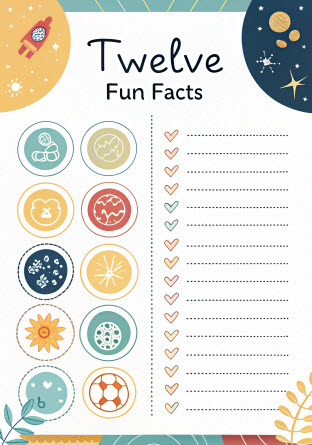-
 They constantly leak air (on purpose)
They constantly leak air (on purpose)
A bouncy castle is never 100% sealed. Because people bounce, air needs to be able to escape (through seams, openings etc.), otherwise pressure builds up and things can get unsafe. That’s also why the blower has to run the whole time — to replace escaped air and maintain shape and bounce.
-
Materials are more advanced than you think
While they look like simple PVC or vinyl tents, the materials are engineered for durability, UV resistance, tear-resistance and flexibility. Seams are reinforced, often double or triple stitched. Some use layered fabrics, special coatings etc.
-
They were born by accident
The idea of a bounce house began not as a toy but from experiments with inflatable covers for courts. John Scurlock, the man often credited with creating the first commercial inflatable bounce structure, was making inflatables for practical use when someone noticed the fun in bouncing.
-
“Moonwalk” was an early name
Before “bouncy castle”, “bounce house”, or “inflatable castle” became common, some of these structures — especially in the US — were called “moonwalks” or “moon bounces”. The name evokes the light, weightless feel when bouncing.
-
They do real “engineering” inside
There are internal chambers and baffles designed so the air distributes evenly, to prevent weak spots or unpredictable bounce. Without that, some areas could collapse or sag under weight. Pressure regulation is important: not too soft, not too rigid.
-
Wind is way more dangerous than most people realise
If a bouncy castle isn’t properly anchored, wind can lift it, especially if it acts like a sail. Even moderate gusts can generate enough force to rotate or displace an inflatable structure. There have been accidents from this.
-
Power requirements are higher than folks guess
The blower that keeps the structure inflated must run continuously and deliver enough airflow to make up for leaks and movement. Depending on size, that blower can consume a couple of kilowatts or more. It's not just a puff-piece.
-
They’re used for more than just parties
Inflatable structures are used in therapy, rehab, motor skills training, etc. The soft yet responsive bouncing surface is great for balance work, coordination, sensory play.
-
Adults like them too — and some are made especially for grownups
There are adult-sized castles, tougher fabrics, stronger blowers, higher weight capacities, etc. Not just kid stuff.
-
They can be used indoors or outdoors—and in more weather types than you think
Some are made to resist weather: waterproof coatings, designs that can tolerate light rain, shades/protective covers. Indoor bouncy/emporium parks are popular where weather is unpredictable.
-
They’re surprisingly heavy when deflated
If you ever help pack up one, you’ll notice how bulky and weighty even a deflated and folded bounce house is. The material plus the built-in reinforcement, Zips, seams, etc., make for bulky, rugged equipment. This is one reason hire companies use trailers or large vans. (Less well documented in sources, but a logistical fact of the business.)
-
Tough to simulate the “bounce feeling” in other ways
The way a bounce works in a castle depends on a mix of air pressure, elasticity of material, internal structure (how the air chambers are arranged), and how energy is absorbed and returned. It’s not just like a trampoline: the bounce is more damped, softer, safer for small tumbles, because the air cushion and material absorb more shock. So you can’t easily recreate the same sensation without something inflatable.
When you look at a bouncy castle, it’s easy to see just the bright colours, the laughter, and the fun. But underneath that cheerful exterior lies a fascinating blend of physics, engineering, and history. From John Scurlock’s happy accident in the 1960s to today’s colossal inflatables that can fit hundreds of jumpers, bouncy castles have come a long way. They rely on constant air pressure, specialized materials, and clever internal design to keep us bouncing safely — though, as the stats show, safety still depends a lot on setup, supervision, and respect for the elements (especially the wind!).
What makes bouncy castles so special isn’t just the joy they bring, but how they turn simple air into an unforgettable experience. Every bounce, flip, and tumble is a reminder of human ingenuity and playfulness. Whether used for therapy, exercise, or pure fun, these inflatable playgrounds connect generations through something universal — the thrill of flight without leaving the ground.
So, next time you step into a bouncy castle, take a second to appreciate the science, creativity, and even the hidden dangers that make that joyful experience possible. Behind every giggle is a marvel of design and a legacy of invention — proof that sometimes, the most extraordinary engineering hides inside a child’s party favourite.